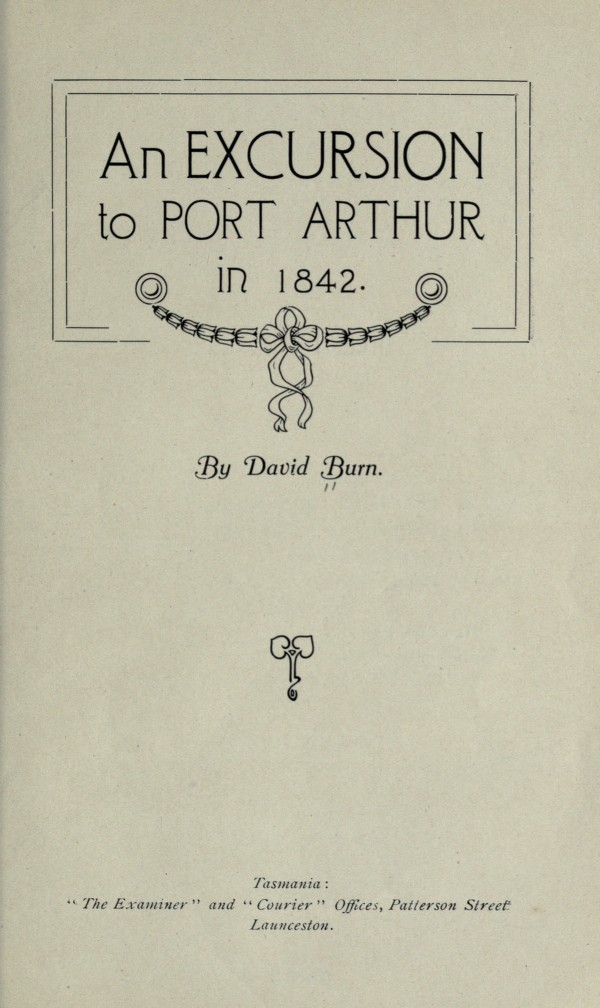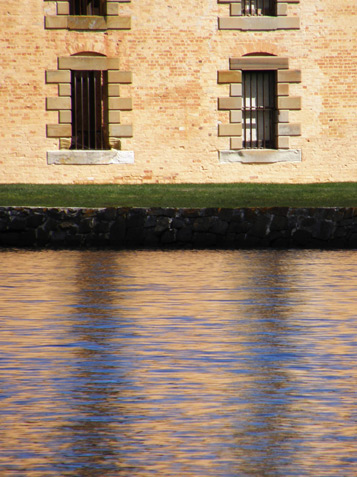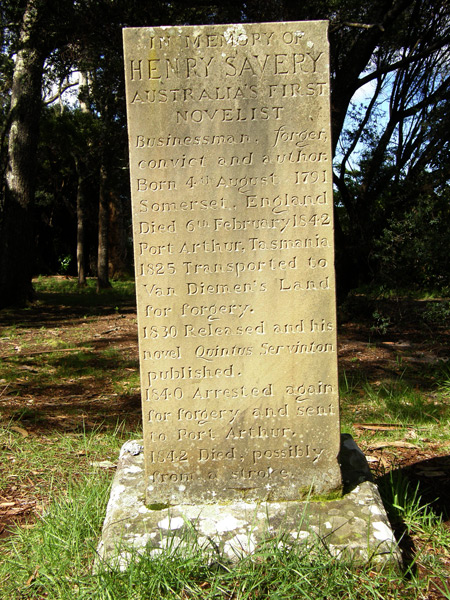 |
|
In the summer of 1842, Tasmanian dramatist David Burn [David Burn ADB] boarded the Eliza for a tour of the penal settlement of Port Arthur. On January 9, a Sunday, he and his party visited the penitentiary hospital, and here, writes Burn [Burn, David, An excursion to Port Arthur in 1842, see page 20-23 ], they encountered Henry Savery, “the once celebrated Bristol sugar-baker – a man upon whose birth Fortune smiled propitious.” The “miserable felon” before them, with his “lack-lustre glare” and “scarce-healed” neck-wound from his latest suicide attempt, moves in Burn “the deepest compassion mingled with horror and awe. There he lay, a sad – a solemn warning.” A month later, on February 6, Savery was dead: possibly, as Henry Melville [Henry Melville ADB] records, by again cutting his throat, or possibly as a result of a stroke (Burn describes Savery as having suffered a “shock of paralysis”; it is unclear if Savery is still suffering at the time of the Port Arthur visit). Whether by stroke or by suicide, the death, as the Reverend John Allen Manton [John Allen Manton ADB] records in his notebook, “was without honour,” and brought to a close a catastrophic life.
 |
 |
Burn, David, An excursion to Port Arthur in 1842 - link to account about by David Burn Henry Savery - pages 20 and 23
|
Henry Savery's memorial gravestone on the Isle of the Dead, Port Arthur. He died in the Port Arthur Hospital on February 6th, 1842. |
See also The Companion to Tasmanian History
and Port Arthur and Henry Savery
home | Henry Savery | businessman | forger | convict | author | England | Port Arthur | transported | Van Diemen's Land | Quintus Servinton
| © University of Tasmania ABN 30 764 374 782 CRICOS Provider Code 00586B | Copyright & Disclaimers | Accessibility | Site Feedback International Students | Future Students | Research | The Graduate School |

